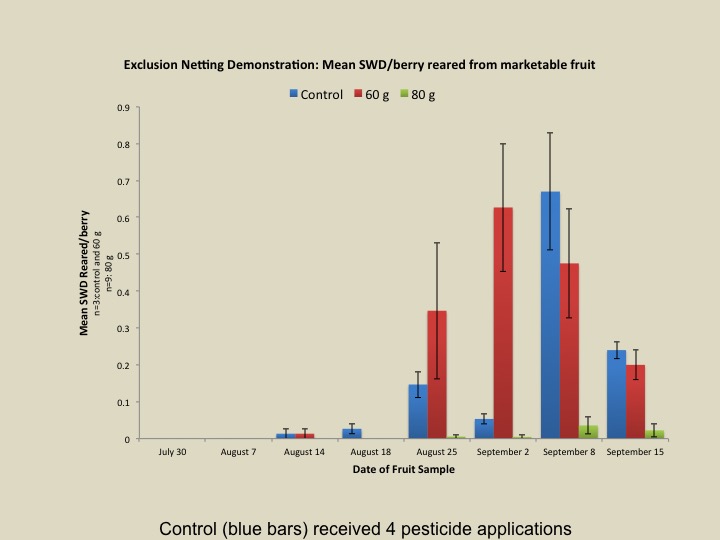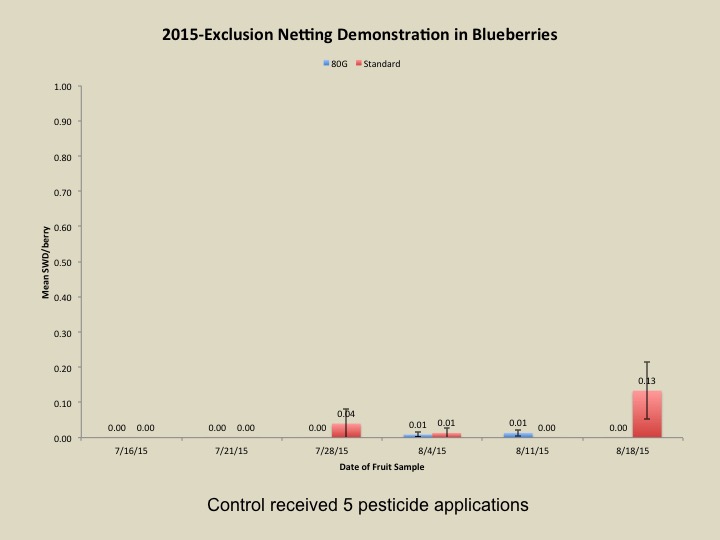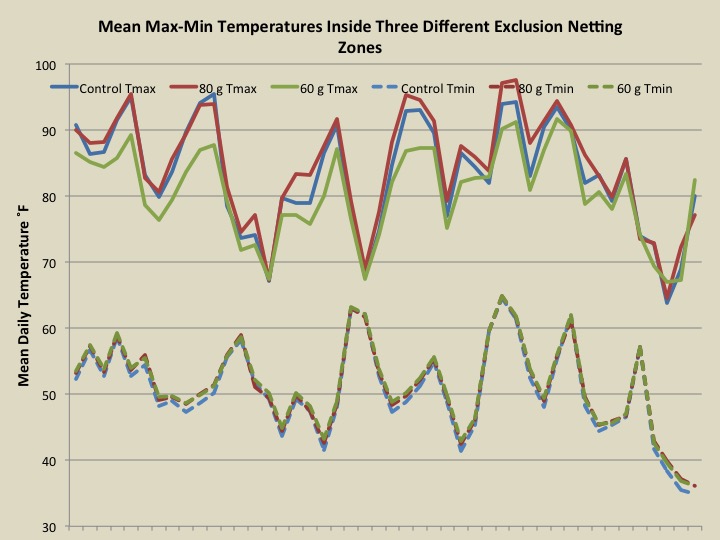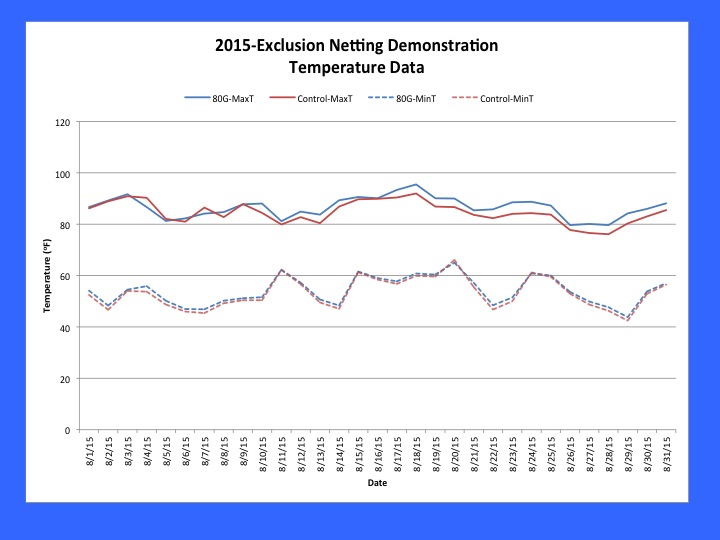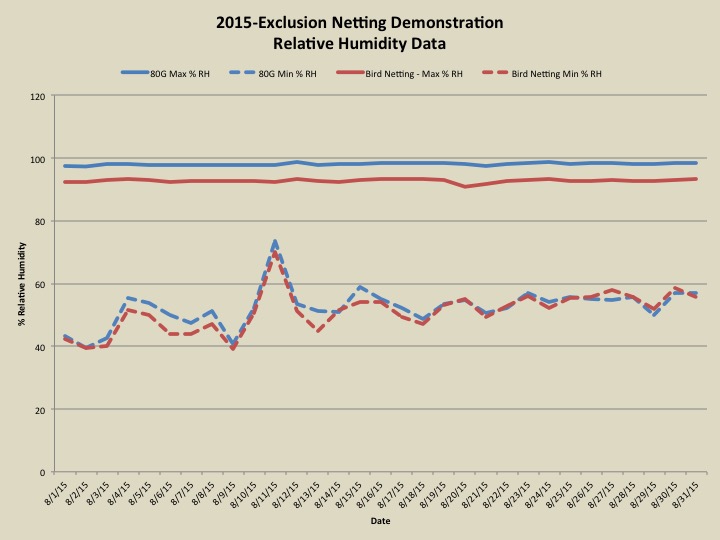Final Report for FNE14-813
Project Information
This project investigated the feasibility of using 80 gram (.95 mm x .95 mm) insect exclusion netting on an existing bird netting support system to prevent Spotted Wing Drosophila (SWD) infestation in a commercial mature blueberry planting. Complete rows of the planting were covered with 60 gram insect netting, 80 gram insect netting, and standard bird netting prior to fruit coloring. The two netting treatments had mesh covered double entry vestibules for a defined entryway into the planting. Fruit samples were collected weekly and held in rearing cups in a lab for three weeks to determine SWD infestation levels in the fruit.
The system worked extremely well. In 2014, with the 80 gram netting, at most, only 0.53 percent infestation occurred in a 10 week harvest season. Unsprayed berries without exclusion netting had as high as a 60% infestation level in one sampling period alone. In 2015, using the 80 gram netting, at most, a 0.37% infestation was found over a 5 week harvest season. Sprayed berries without exclusion netting had as high as a 20% infestation level in an individual sampling period. The netting held up through 3 severe thunderstorms and 2 hail storms and we refined our attachment system for large scale deployment of large pieces of netting.
This system has great potential for small scale, organic, and no-spray blueberry growers and I believe the system can be used by raspberry growers as well. Approximately 750 growers were directly reached through 2 field days, 3 SWD workshops, and 4 state/regional conferences. Even more were reached through articles in trade journals. More presentations are on the calendar for after this grant is complete.
Introduction:
Spotted Wing Drosophila (SWD) is an invasive fruit fly, native to Southeast Asia, that arrived in New York State in the fall of 2011. In the summer of 2012, it destroyed raspberry and blueberry crops throughout the Northeastern U. S. In 2012, on my farm, I lost 40% of my blueberry crop to SWD. I would have lost 95% of my raspberry crop to SWD if I had not sprayed every 3-4 days. However, my customers are used to buying no spray berries from me. Prior to SWD, I raised blueberries and raspberries for 15 years without using pesticides. Preliminary results on one other farm and small scale research plots in berries had shown that there was potential to use a very fine knitted mesh netting to exclude SWD from berry plantings as a means of pest management. Previous research had only looked at small scale plots and were not conducive to commercial operations that need daily access for harvest and other maintenance operations, while also ensuring worker comfort during harvest. I wanted to see if I could adapt an existing bird netting support structure to support SWD netting and to determine if the netting could exclude SWD populations enough to produce a commercially acceptable blueberry crop without the use of pesticides.
The Berry Patch is comprised of 240 acres, right on the NY/MA border in Stephentown New York. We are first generation farmers and we started this farm from scratch on a worn out old corn field. We initially bought 91 acres (approximately 15 acres tillable) on which we planted strawberries, raspberries, and blueberries. Over the years, I grew the farm from a part time berry operation into a 240 acre full-time farm that currently grows berries, vegetables, and cut flowers on approximately 10 acres. We rent the remaining 75 acres of tillable ground to a fellow farmer in Stephentown. We have gone from 15 acres of tillable ground with no improvements nor equipment, to a farm of 240 acres with irrigation, worker housing, farm equipment, equipment barn, one heated greenhouse and 4 unheated high tunnels, a farm store with walk-in cooler, 9 employees during the summer, and one year round assistant manager. We sell through our farm store, at the Troy Waterfront Farmers Market, and to about a dozen restaurants in the Berkshires.
Collaborators on this project include Dr. Greg Loeb, Small Fruit Entomologist at Cornell University’s NY Ag Experiment Station in Geneva, Stephen Hesler, Greg’s research support specialist, and Laura McDermott, Small Fruit Extension Specialist in Eastern NY for Cornell Cooperative Extension. Laura collected fruit samples each week during the summer and sent them to Greg and Steve, who set up the fruit in rearing cups to determine if any fruit had been infested with SWD. Laura also helped organize two field days at our farm, one each in 2014 and 2015, as part of our outreach plan. Greg attended both field days to help teach SWD identification and help answer questions about the research, and to discuss other research pertaining to SWD biology and management. Greg, Laura, and Steve also assisted with the initial design of the experiment and determining sample sizes and protocol.
I set out to determine two things: 1. Can a knitted mesh netting effectively exclude SWD from a commercial blueberry planting, both in terms of using it under daily commercial activities vs. a small research plot, and in terms of economics? and; 2. Can an existing bird netting support system easily be modified to use as a support structure for exclusion netting?
I found that 80 gram exclusion netting was highly effective at excluding SWD from my half acre planting while 60 gram netting was not effective. The costs of the 80 gram netting can easily be recouped as it virtually eliminated SWD from my commercial planting, allowing me to once again grow pesticide free blueberries. I was able to successfully modify my existing support structure into a system that securely held the netting in place, even through severe weather, and can be modified with commonly available greenhouse supplies and hardware that many growers are already familiar with using on their farms.
Cooperators
Research
In 2014, I purchased custom-sewn Tek-Knit 80 gram and Tek-Knit 60 gram netting from Tek-Knit Industries in Montreal Quebec. The 60 gram netting was 26 feet wide and we had the 80 gram netting custom sewn into 26 foot wide pieces. Using galvanized pipe and PVC tees, we constructed a rectangular frame over one row of our blueberries to serve as a frame for the 60 gram netting (see photo 1).
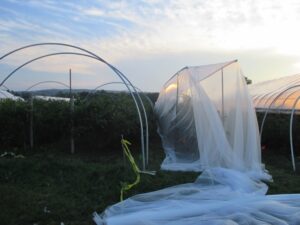
Photo 1. Frame for 60 gram netting
For the 80 gram netting, we used our existing greenhouse hoop support system that we have used for years to support bird netting. Because of my design to join 26 foot wide pieces of netting together, we had to add more hoops and arrange them so that they would overlap to form “valleys” to hold the greenhouse purlins that we would use to join the netting pieces together (see photo 2).
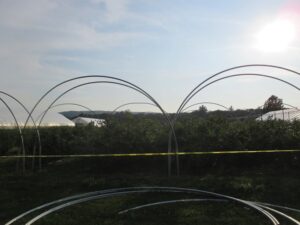
Photo 2. Overlapping hoops to form valleys
We covered 6 rows with the 80 gram netting. We also used greenhouse hoops on one row of blueberries to support our bird netting on our control row. We applied the 60 gram netting on the evening of July 11th. A thunderstorm took down the netting overnight so we re-covered it on July 12th and added galvanized pipes to the bottom of the netting as weights to hold it in place. The netting was wrapped around the pipes and fastened with common plastic greenhouse clamps.
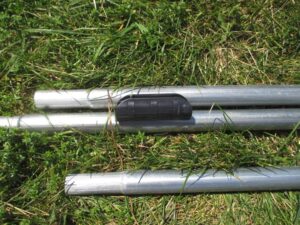
Photo 3. Common greenhouse clamps used to hold netting in place.
We also put up the 80 gram netting on July 12th. For that, we unrolled two rolls of netting the length of the planting and joined both rolls to one continuous purlin the length of the planting. To make the continuous purlin, we laid the 21 foot pieces of swedged purlin tubing on the ground, length to length; joined the swedged pieces together, and duct taped them to eliminate any sharp edges that might damage the netting. We also covered the ends of the purlins with duct tape to eliminate sharp edges. We attached the netting to the purlin while it was still on the ground, using the same plastic greenhouse clamps that we used with the 60 gram netting (see photo 4).
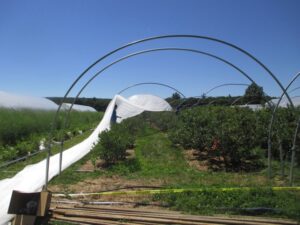
Photo 4. Netting attached to continuous purlin on the ground, in the process of going up.
After everything was attached, we raised the continuous purlin up and over the hoops for the length of the planting so that it then rested in the valley between the first and second set of hoop supports. We unfolded the netting like butterfly wings to get the second piece of netting up over the second set of hoop supports and onto the third set of hoops. We temporarily fastened the netting to the hoops with our plastic greenhouse clamps. A miscalculation of netting needs on my part prevented us from being able to have the next purlin sit in the valley of the overlapping hoops. We attached the purlin to the hoop supports with standard greenhouse fasteners, and then wrapped pieces 2 and 3 of the netting around the purlin from underneath the structure, again fastening it with plastic greenhouse clamps (see photo 5).
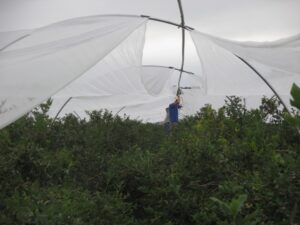
Photo 5. Joining netting overhead
To weigh down the netting on the edges for the length of the planting, we wrapped it around purlins on the ground, fastening it with greenhouse clamps. On the south side of the planting, open to the wind, we also reinforced it with rock bags (see photo 6).
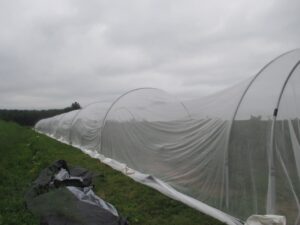
Photo 6. Edge attached to purlin on the ground and anchored with rock bags
We used rock bags to anchor it down on the perpendicular ends. On the ends of the rows we joined the sheets together with binder clips initially, and later installed 4 x 4 posts with greenhouse wiggle wire channel on the back of the posts (see photos 7 and 8).
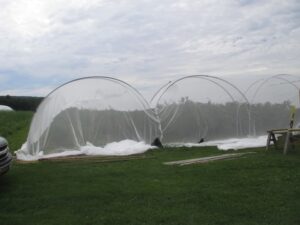
Photo 7. Seam attached with binder clips
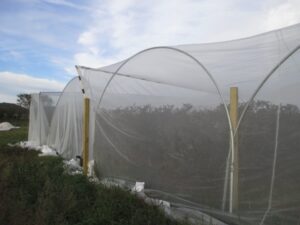
Photo 8. Seam attached to back of 4 x 4 with wiggle wire
We attached the netting to the channel using standard greenhouse wiggle wire. For the entryways to the plantings, a carpenter friend of ours built very sturdy vestibules out of 4 x4 treated lumber (see photo 9).
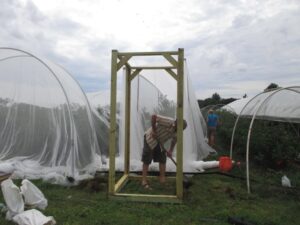
Photo 9. Vestibule frame
We covered the vestibule with 80 gram netting and used standard greenhouse wire lock channel and wiggle wire to hold the netting in place. No adhesives will stick to the netting so we kept the doors closed by using binder clips to attach the netting to the sides of the wire lock channel holding the netting in place (see photos 10 and 11).
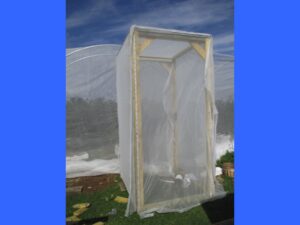
Photo 10. Covered vestibule in process of fastening netting
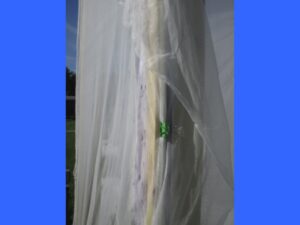
Photo 11. Binder clips for fastening doors
The vestibules provided double protection as we would enter through the first doorway, get it secured, and then go through the second doorway into the planting itself, securing it after entering the planting.
Berries were sampled by Laura McDermott from Cornell Cooperative Extension on a weekly basis from July 15th to September 15th. She collected 25 berries from each of 9 sites, for a total of 225 berries per week from the 80 gram netting. She collected 25 berries from each of 3 sites, for a total of 75 berries per week from the 60 gram treatment and from the control treatment. These berries were sent via overnight mail to Steve Hesler in Greg Loeb’s lab in Geneva NY. Upon arriving in Geneva, they were placed in rearing cups and checked every three days to determine if any SWD emerged from them over time. Part way through the summer, after we had a brief breach in the netting because of a thunderstorm, Steve and Greg’s lab crew also evaluated the berries for oviposition scars and egg breathing tubes. Laura also collected berries and evaluated them for oviposition scars.
The control row was treated with 4 applications of pesticides. Application dates were July 29, August 5, August 10, and August 24. The first SWD were detected in traps on July 21st. There was a light passing shower on July 31 and heavy rain on August 7th. Research elsewhere in the country indicates that rain greatly decreases the efficacy of many of the pesticides cleared for use against SWD. I made the last application on August 24th as it seemed that we did not have many SWD around and I was tired of spraying. The first two applications were 6 oz/A of Delegate plus 2 lbs sugar/100 gals of water. The second two applications were 5.3 oz/A of Assail plus 2 lbs sugar/100 gals of water. We removed the netting in October and stored it in UV resistant tarps for the winter (see photo 12).
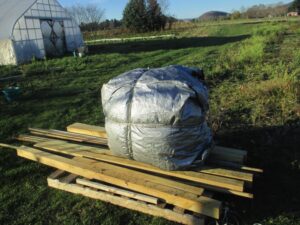
Photo 12. Winter storage
In 2015, we repeated the experiment with 80 gram netting only. We covered 7 rows with 80 gram netting and the same control row was covered with bird netting. We made several changes to the design for the better. Due to the success of using wiggle wire on the doorway in 2014, in 2015 we used wiggle wire to connect the separate pieces of netting to each other throughout the planting. We attached greenhouse wire lock channel to all the purlins, whether they were on the ground or on the support structure. Rather than have the purlins sit in the valleys of the overlapping hoops, we connected them to the hoops themselves with standard greenhouse connectors. By doing this, we were able to more efficiently use the entire width of the netting. We placed the purlins at the appropriate place on hoops; connected the netting, two pieces at a time, with one set of wiggle wire; and then opened up the netting like butterfly wings to reach across the planting to the next purlin (see photos 13 and 14).
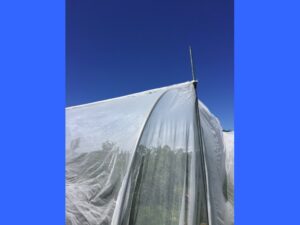
Photo 13. 2015 Overhead netting attachment
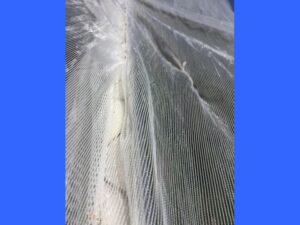
Photo 14. Close up of wire lock attachment system
In 2015, we applied the netting on July 6th. We also used the wiggle wire system to attach the netting to the purlins on the ground. All fastening was done at ground level by July 9th. In 2015, we used gravel on top of the netting on the 2 ends of the planting. This was completed by July 23rd. We also re-designed our doorway entry system. We had door panels manufactured out of rip-stop nylon with large, heavy duty zippers sewn into the panels for easy entrance into the vestibule and planting (see photo 15).
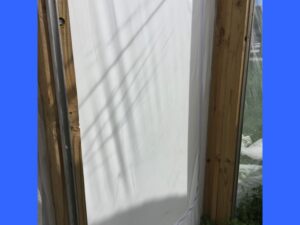
Photo 15. Zippered doorway
We attached the panels with wiggle wire, and everyone was much more satisfied with the process to enter and exit the planting.
In 2015, samples were collected weekly from July 15th to August 15th. Commercial harvest ended on August 18th in 2015, a much shorter season than in 2014. Samples were again sent to Geneva for rearing. In 2015, only the staff at Geneva looked for oviposition scars. The control treatment was sprayed with insecticides 5 times in 2015. Applications were made on July 23 (5.3 oz /A Assail), July 27 (5.3 oz/A Assail plus 2 lbs sugar/100 gals of water), August 4 (6 oz Delegate plus sugar), August 9 (6 oz Delegate plus sugar) and August 17 (5.3 oz Assail plus sugar). Rainfall on July 24 and July 26 equaled .20 inches. Rainfall on August 1 and the morning of August 4 equaled .55 inches. It rained all day on August 11 for a total of 1.2 inches and rainfall on August 15 was .15 inches. Netting was once again removed in October and stored out of the elements. In both 2014 and 2015 we deployed temperature monitors in the control row and in the 80 gram netting rows. In 2015, we also measured relative humidity.
In 2014, the 80 gram netting did an excellent job of excluding SWD. Over the course of the 10 week sampling season, we had a total of 0.53 % infestation of berries inside the 80 gram netting. The way the 60 gram netting was knitted, the threads were easily moved by brushing against blueberry bushes. Consequently, the openings in the mesh were widened to the point where SWD were able to get inside the netting and we had very high levels of infestation. The control treatment had higher levels of infestation than the 80 gram netting, but for the most part were commercially acceptable, until I stopped spraying in late August because it seemed like very few SWD were around. On Labor Day weekend, temperatures reached almost 100 degrees and SWD populations exploded state-wide. It was a bad decision for the quality of my berries for me to stop spraying in the control treatment at the end of August. But it was good for this project because it showed how much SWD pressure was on my farm, and showed that the netting treatment still worked, despite heavy pressure (see graph 1).
Graph 1. 2014 SWD Infestation results
The first berries with SWD were found in the 80 gram treatment from the August 25th sampling when 2 SWD adults emerged from 225 berries under perfect conditions in a lab environment. The highest infestation level we had was on September 8th when 5 SWD adults emerged from 225 berries. Our last sampling date of September 15th had 3 adults emerge from 225 berries. Over a 10 week period we had a total of 12 SWD adults emerge from 2250 berries sampled – a 0.53 % infestation level over 10 weeks. In looking more closely at the data, 2/3 of those samples came from the site closest to the doorway. People have asked why there were so many more SWD in the 60 gram treatment than in the control (up to 60% infestation in one sampling). The control was sprayed 4 times. The 60 gram treatment was never sprayed and it illustrates how devastating SWD infestations can be.
Based on the 2014 results, in 2015 we only tested the 80 gram treatment compared to a pesticide treated control. The results were even better. On August 4th 2 SWD adults emerged from 225 berries. On August 11th, 3 SWD adults emerged from 225 berries. That was it for the season. Due to a shorter harvest season, our sampling ended on August 18th, the end of the commercial harvest season. No SWD emerged from berries sampled on August 18th. Over a 5 week harvest season, 5 SWD emerged from 1350 berries – a 0.37% infestation. The tighter spray schedule on the control bushes also kept SWD in check better than the previous season but on August 18th, our last sampling date, 15 SWD emerged from 75 berries, approximately a 20% infestation. The actual percentage of berries infested with SWD may have been a bit less than 20% as we do not know how many berries may have had multiple SWD emerge from them. (see graph 2)
Graph 2. 2015 SWD Infestation results
Both years of temperature data indicate that the 80 gram netting sometimes has a slightly higher temperature during the day but it is not very much. (see graphs 3 and 4)
Graph 3. 2014 temperature graph
Graph 4. 2015 temperature graph
The night temperatures were virtually the same. The relative humidity data show that relative humidity was slightly higher under the 80 gram netting than in the control. During the day, it could be a very small amount higher, but was not consistently higher. At night, it was consistently higher by about 4-6%. However, both treatments were consistently over 90% relative humidity, but under 100% (see graph 5).
Graph 5. 2015 Relative Humidity graph
One of the great improvements that we made in 2015 was using the zippered doorways. Our picking crew loved them and we did not have any problems with the doors not getting closed properly as we had in 2014. The system to attach large pieces of netting to each other on the purlins worked well both years. In 2014 the netting held up through 3 severe thunderstorms and 2 hailstorms. The sewn seams and netting were in great shape at the end of both seasons. In 2014, we had one severe thunderstorm lift up one end of a purlin sitting in a valley, which made the far end of the 21 foot piece of swedged tubing angle towards the ground. This made some of the plastic clamps pop off the netting and caused a breach. After the thunderstorm ended, we easily re-attached the netting to the purlins and had everything secured again within 15 minutes. The netting wrapped around the high purlin attached directly to the hoops had about a 6 foot breach occur in it in a second thunderstorm a couple of days later. We again easily fixed the breach. The main problem with attaching the netting around the purlin in the valley was the abrasion that occurred where it was compressed between two of the support hoops. Besides not using the netting to its’ fullest capacity, the abrasion from the purlins rubbing against the hoops damaged that netting. With the improved system of using wiggle wire attachment in 2015, none of these problems occurred and we had no loss of attachment in 2015. We had one small hole form at the bottom of one piece of netting on the north side of the planting, adjacent to the control plot. There again, 2 hoops were rubbing against each other and the netting that was caught between the two pieces wound up being abraded and creating a hole (see photo 16).
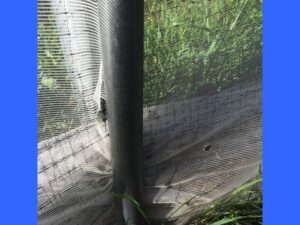
Photo 16. Hole from abrasion
It is possible that the small infestation that occurred in 2015 was because of SWD getting through that opening. It was right beside the control row, which had more SWD pressure, and only 20 feet from our raspberry tunnel which had fruit infestation as early as July 23rd. There is also a possibility that the SWD were able to get in underneath some of the purlins that anchored it at ground level. Unfortunately when I was working on changing over the door covering on the vestibule on July 5th, the stepstool I was standing on collapsed, and I wound up breaking my arm in my resulting fall. Thanks to doctor’s appointments, I was not able to supervise the attachment of the netting during the next two days. My farm crew was supposed to wrap the netting around the ground purlin, going underneath the purlin against the ground before attaching it to the purlin with wiggle wire. They did not do that and they attached the netting to the top of the purlin directly. Because of the uneven ground, there were areas where the purlin did not have a tight seal on the ground, and with no netting wrapped underneath it, there is a possibility that SWD may have entered the planting under one of those areas.
The retail cost of the netting to cover the half acre of blueberries in this manner is $4600, including the custom sewing. When the netting is purchased from Berry Protection Solutions, who offers tiered pricing for multiple rolls, the cost works out to $0.135 per square foot. When amortized over 5 years, the cost of the netting is $657 per year. With proper care during the winter, Tek-Knit guarantees the netting against UV breakdown for five years. I recently reviewed web prices for large rolls of bird netting. One supplier offered bird netting that was also made by Tek-Knit at $0.055 per square foot. The second cheapest bird netting price I found was $0.12 per square foot and one could not get rolls more than 100 feet long. Most of the bird netting I found cost between $0.28 per square foot and $0.41 per square foot. The longest length roll available was 200 feet. One supplier offered a one year guarantee on the netting. The netting from that supplier cost $0.16 per square foot in 200 foot lengths. The cost of new wire lock channel and wiggle wire was $0.86 per linear foot. On my planting I used 1000 feet of wiggle wire along with some odds and ends that I had at the farm to use on the doorways, upright seams etc. Doors made of ripstop nylon with heavy duty zippers can be purchased for about $75 each. In the second year, two people were able to get all the netting up and wiggle-wire attachments complete in 1.5 days.
This project was more successful than I ever dreamed it could be. We had a field day in 2014 at which the owner of Tek-Knit attended and he was impressed with how we set up our covering system. He asked us if we would be interested in distributing this product in the U.S. and we eventually said yes. We have been selling small quantities to a few growers to try out and we sold the netting to researchers in 6 states to do demonstrations and conduct other research. We sold the netting to a raspberry grower in Oregon who covered half an acre of his planting with the netting and wanted to cover more. Unfortunately, Tek-Knit only manufactures the netting once a year, and there was not more netting available to sew into 26 foot wide pieces for the grower in Oregon.
Education & Outreach Activities and Participation Summary
Participation Summary:
Laura, Greg, and I held two field meetings at my farm - August 2014 and early September 2015. A total of approximately 50 people attended the meetings. They came from as far away as Maine and Ontario, Canada.
I also gave numerous presentations on the project. The NYS Berry Growers Association held three SWD management workshops from December 2014 to March 2015. I spoke at all three – Syracuse in December 2014, Albany in January 2015, and Batavia in early March 2015. I also spoke about the project at the Connecticut Vegetable Growers Meeting in early January 2015; the mid –Atlantic Fruit and Vegetable Meetings in Hershey PA in late January 2015, the Hudson Valley Fruit School in February 2015, and the monthly meeting of the New England Vegetable Growers Meeting on February 6th 2016.
One of the reporters for the Vegetable Growers News, published in Michigan, was at the Hershey meetings and he subsequently wrote an article about my presentation that was published in the May 2015 Vegetable Growers News. I supplied the photos for that article. This article is also available in their on-line archives (http://fruitgrowersnews.com/article/using-exclusion-netting-helps-manage-swd-in-blueberries/ ).
The Communications manager for the NY Farm Bureau interviewed me for an article for their monthly newspaper – Grassroots - which mentioned the project and for which I supplied the photos (http://www.nyfb.org/img/uploads/file/0515_GR_for_web.pdf).
More articles are planned for the future – the NY Fruit Quarterly plans to have an article and the NY Berry Growers Association will have an article in their newsletter. I also was invited to speak about the project at the Maine Vegetable and Berry Growers meeting in March 2016 but I was not able to make that meeting so they are putting me on the calendar for 2017. The Extension office on Long Island is planning a berry growers workshop in November 2016 at which they would like me to talk about the project.
Project Outcomes
Potential Contributions
This system has worked extremely well. I went from losing 40% of my crop to SWD in 2012 to spraying 6 or 7 days a week in 2013 (25% of the planting each day) to once again growing pesticide free blueberries. Other growers can benefit just as much as I am. It can also be a great product for homeowners to use. Researchers from Rhode Island to Arkansas, Michigan, and Minnesota are trying the netting, and sometimes using a hoop support system similar to mine, in fall raspberries and blackberries. Several are asking my advice on both construction and cultural systems for the raspberries within a netted growing system. For me, the cost of the system can easily be recouped in one year when compared to losing 40% of my crop, or no longer being able to sell pesticide-free blueberries. Given that the 80 gram netting prevents SWD infestation; also protects the crop from birds, deer, hail, wind, and heavy rain; and costs less per square foot than many suppliers of bird netting charge, it is a worthwhile investment for me, and should be for other growers.
Future Recommendations
I definitely have shown that the 80 gram exlusion netting, manufactured by Tek-Knit Industries of Montreal, Quebec, effectively excludes SWD infestations on a commercial level in small scale blueberry plantings. I have not lost a single blueberry harvested from under the netting to SWD and I have been able to once again grow pesticide free blueberries because of this project. We have modified how we attach the netting to our existing support structure that we used to support bird netting. This year, we are going to cut costs some more by installing 1” x 6” baseboards on the perimeter of the frame to hold the wiggle wire at the base. It is cheaper than metal purlins on a per linear foot basis (approximately 60% of the cost of purlins). We will use top soil or gravel along the baseboards to make a seal so that nothing can crawl underneath the baseboards to get into the planting.
I have a learned a lot from this project and I have several ideas to continue to investigate. This year, Greg, Laura, and I are going to convert our control row from the last two years into a row that we cover with netting that has a few holes and test an “attract and kill” method for any SWD that get in. I think it will be important for people using this system in the future to have an answer on how to manage SWD for any incursions that may happen. Accidents happen on farms. The netting is very durable and is guaranteed against UV degradation for five years, but one never knows what may happen. Severe thunderstorms could cause problems, inexperienced tractor or lawn mower operators could cause problems, a harvester may fail to close the doors properly, the list is endless. So we want to come up with a solution for the possibility of dealing with infestations detected early inside the netting.
We also are looking for a student to work on a project to adapt the “Smart Net” bird netting system to one that can use the 80 gram netting. Many growers have installed Smart Net systems for bird control over the last 5 years. When the bird netting that is on those systems is ready to be replaced, it would be natural to change the bird netting to exclusion netting. We have a couple of growers that are not too far from our farm that we believe may be interested in the project.
Lastly, I have approached the NYS state NRCS office about offering cost-sharing on this practice. We have 2 years of data that show this technique works extremely well. It can eliminate the need for insecticide use in a planting during the harvest period. If NRCS can cost share high tunnels for farmers, there is no reason why they can’t cost share this material. NRCS is interested but it will be a long process to create the specifications that they will set forth to offer cost sharing. The state conservationist stated that they are used to having set design specifications, usually determined by engineers, and have never worked with a brand new system that never existed before. I think that my propensity for persistence can pay off in working with them.
Several researchers that have purchased netting are looking at how this system will work with fall raspberries. I think there is great potential for success with netting fall raspberries as well.
I definitely think this idea should be promoted to a larger audience. SWD is now a nation wide problem. There are a lot of smaller scale growers throughout the country that are growing berries and who do not want to spray, or do not have the equipment to spray. Biological control of SWD is still quite a ways away from any commercial applications. The netting is something that growers can invest in now and still be able to produce high quality berries, full of phytonutrients for the general population to benefit from. The national trade journals for berry and vegetable growers should be publishing this information, the state trade newspapers should be publishing this information, and any organization that assists with educating growers should be using this information. I also think that non-agricultural media should be made aware of this – preferably during the summer when a story can be done by reporters visiting the farm to see the system set up and “in action”. It will help get the word out to the non-farm public so that gardeners can also benefit from this system.
Some of the requests for information about the system have come in from the mid-west and it would be helpful to let state organizations in the Mid-west and West know about the research and that I’m available to speak at their conferences. I have spoken at many of the conferences in the Northeast with two notable exceptions – the New England Fruit and Vegetable Conference held every other year, and the New Jersey conference held every year.
I appreciate the opportunity that SARE helped provide by partially funding this project. I believe it is exactly the type of innovative work that the farmer grant program was created for so that innovative work being done by farmers can help farmers nationwide.
